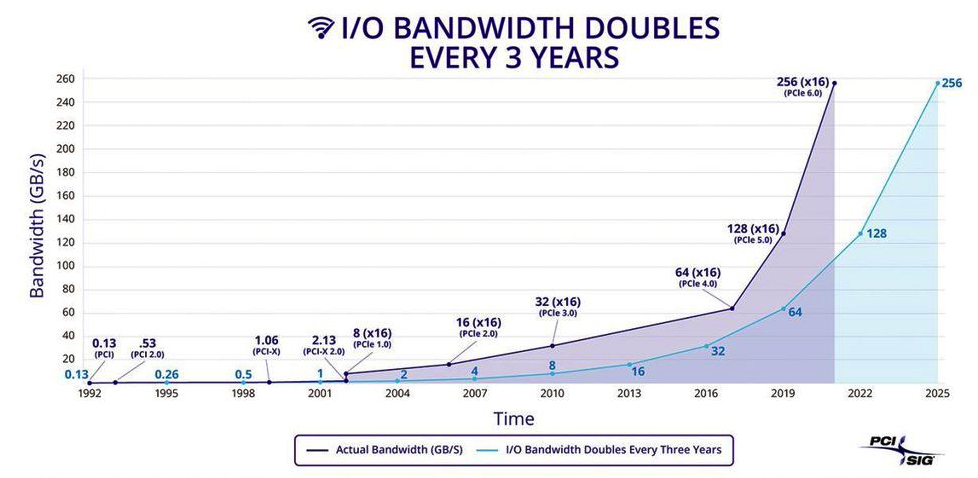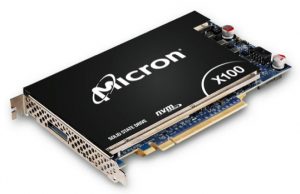Micron Claimed X100 SSD World’s Fastest Flash Unit With 2.5 Million IO/s and 9GB/s RW
One exception from Liqid
This is a Press Release edited by StorageNewsletter.com on October 29, 2019 at 2:49 pmMicron Technology, Inc. announced a breakthrough in nonvolatile memory technology with the introduction of the world’s fastest SSD, the X100 SSD.
It is the first solution in a family of products from the company targeting storage- and memory-intensive applications for the data center. These solutions will leverage the strengths of 3D XPoint technology and usher in a new tier in the memory-to-storage hierarchy with higher capacity and persistence than DRAM, along with higher endurance and performance than NAND.
“Micron’s innovative X100 product brings the disruptive potential of 3D XPoint technology to the data center, driving breakthrough performance improvements for applications and enabling entirely new use cases,” said EVP and chief business officer Sumit Sadana. “Micron is the only vertically-integrated provider of DRAM, NAND and 3D XPoint solutions in the world, and this product continues the evolution of our portfolio towards higher value solutions that accelerate AI capabilities, drive faster data analytics and create new insights for our customers.“
X100 SSD – Performance for Cloud and Data Center
With a combination of high bandwidth, low latency, high QoS and high endurance, it provides performance for big data applications and transactional workloads. It accelerates data center applications by delivering larger amounts of data in real time, and it increases the speed of data transactions while maintaining predictably fast service for quicker time to insights competitive SSD offerings.
• Industry’s highest bandwidth – has more than 9GB/s bandwidth in read, write and mixed modes and is up to 3 times faster than today’s competitive NAND offerings
• Low latency – provides consistent read-write latency that is, times better than NAND SSDs
• Application acceleration – enables 2 to 4 times the improvements in end-user experience for various applications with prevalent data center workloads
• Performance in small size storage – eliminates the need for overprovisioning storage for performance
• Ease of adoption – because the X100 SSD uses the standard NVMe interface, requires no changes to software to receive the full benefits of the product
The X100 SSD will be in limited sampling with select customers this quarter.
Comments
With NVMe, PCIe and increased density, solid-state disks seem to ever get higher performances and capacities, progressively definitively eliminating SATA and SAS SSDs and already putting out of the market with ease low capacity HDDs.

NVMe 3D X100 SSD with PCIe Gen 3 x16 is the first 3D XPoint product from Micron that finally announces it as a fastest alternative to flash even if Intel has already brought products to market under Optane brand, the DC D4800X with 3D XPoint media.

They are going to compete for upcoming second-gen Optane SSDs that offers significantly better performance than NAND flash memory and with DRAM-like access times.
The two companies co-developed 3D XPoint memory. Micron owns the fab where it is produced but Micron wished to be in charge manufacturing and also R&D as Micron intends to acquire remaining interest in IM Flash Technologies JV in Lehti, UT, with Intel for $1.5 billion, as it was released in October 2018.

Micron claimed that X100 its the world's fastest flash unit with 2.5 million IO/s and 9GB/s RW, and 550,000 IO/s. Its read and write latency is 8µs or less, better than the 10µs that Intel's current Optane SSDs promise, 3 times better that flash SSDs. Capacity was not revealed bit El Register estimates that it will be 512GB.
Up to now, only two SSDs surpass 9GB/s transfer rate:
- Element LQD4500 from Liqid with 24/16GB/s R/W, 4 million I/Os, latency of 20µs, up to 32TB, in a thin full-height, full-length form factor with TLC 3D NAND
- A 3.5-inch SSD from Seagate at 13GB/s, up to 64TB, that was only a demo at FMS 2017 and never produced














 Subscribe to our free daily newsletter
Subscribe to our free daily newsletter

